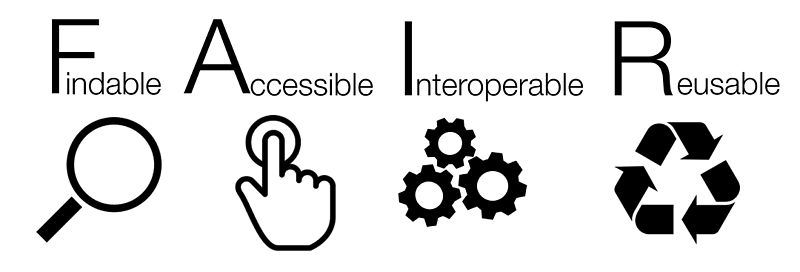The FAIR data principles provide guidelines that improve the findability, accessibility, interoperability and reuse of digital assets. FAIR as a concept and as a practice has gained traction in the last few years, and now, any conversation about research data curation and publishing needs to include FAIR. UWC is committed to the FAIR principles being used to the fullest extent possible.

Storing data on an established data repository goes a long way to ensuring it is compliant with FAIR principles. Ensuring that the data is richly described and accompanied by supporting documentation, supplied in open formats where possible, and published openly (where legally and ethically permissible) also increases the FAIRness of the data.
“Good data management is not a goal in itself, but rather is the key conduit leading to knowledge discovery and innovation, and to subsequent data and knowledge integration and reuse by the community after the data publication process”. To understand the principles of FAIR better, the following information is referenced from the seminal paper The FAIR Guiding Principles for scientific data management and stewardship.
To be FINDABLE
Data and supplementary materials are described with sufficiently rich metadata and assigned a unique and persistent identifier.
F1: (meta)data are assigned a globally unique and persistent identifier
F2: data are described with rich metadata (defined by R1 below)
F3: metadata clearly and explicitly include the identifier of the data it describes
F4: (meta)data are registered or indexed in a searchable resource
To be ACCESSIBLE
Metadata and data are understandable to humans and machines. Data is deposited in a trusted repository.
A1: (meta)data are retrievable by their identifier using a standardized communications protocol
A1.1: the protocol is open, free, and universally implementable
A1.2: the protocol allows for an authentication and authorization procedure, where necessary
A2: metadata are accessible, even when the data are no longer available
To be INTEROPERABLE
Metadata use formal, accessible, shared and broadly applicable language to represent knowledge.
I1: (meta)data use a formal, accessible, shared, and broadly applicable language for knowledge representation.
I2: (meta)data use vocabularies that follow FAIR principles
I3: (meta)data include qualified references to other (meta)data
To be REUSABLE
Data and collections have clear usage licenses, and provide accurate information about their provenance.
R1: (meta)data are richly described with a plurality of accurate and relevant attributes
R1.1: (meta)data are released with a clear and accessible data usage license
R1.2: (meta)data are associated with detailed provenance
R1.3: (meta)data meet domain-relevant community standards

